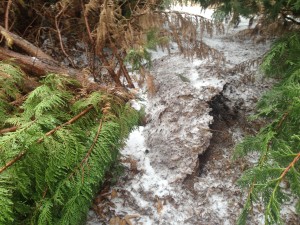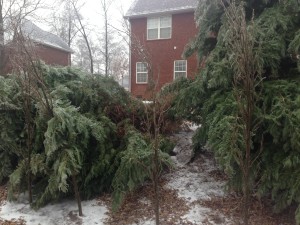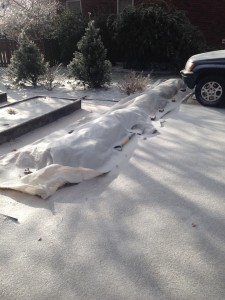There’s nothing worse in the winter than an ice storm.
You hear the trees outside cracking and snapping. It can break your heart.
You feel helpless…
What can you do?
Nothing at this point. But you can help young trees prepare for the next ice storm. There will always be another…
Pruning Branches Correctly
- Choose a central leader. This is easy for oaks, magnolias, and other pyramidal trees. It’s more difficult for pears, redbuds, and zelkovas. Choose one branch to grow straight up and remove the rest. Don’t leave forked branches. It’s the weakest angle.
Buy The Right Tree Varieties
- Don’t pick a callery pear tree. Yes, they’re popular and pretty. They have great fall color too. But they are short lived. They are very susceptible to wind and ice damage.
Install The Tree Right

This leyland cypress was not installed correctly. The roots did not develop properly and failed when the ice weighed the tree down.
Thankfully, ice storms only happen once in a while. You’ll sleep better the next time, knowing you did everything you could. Now, whose ready for Spring!?
For more on winter protection, check out this post on protecting tender plants.






